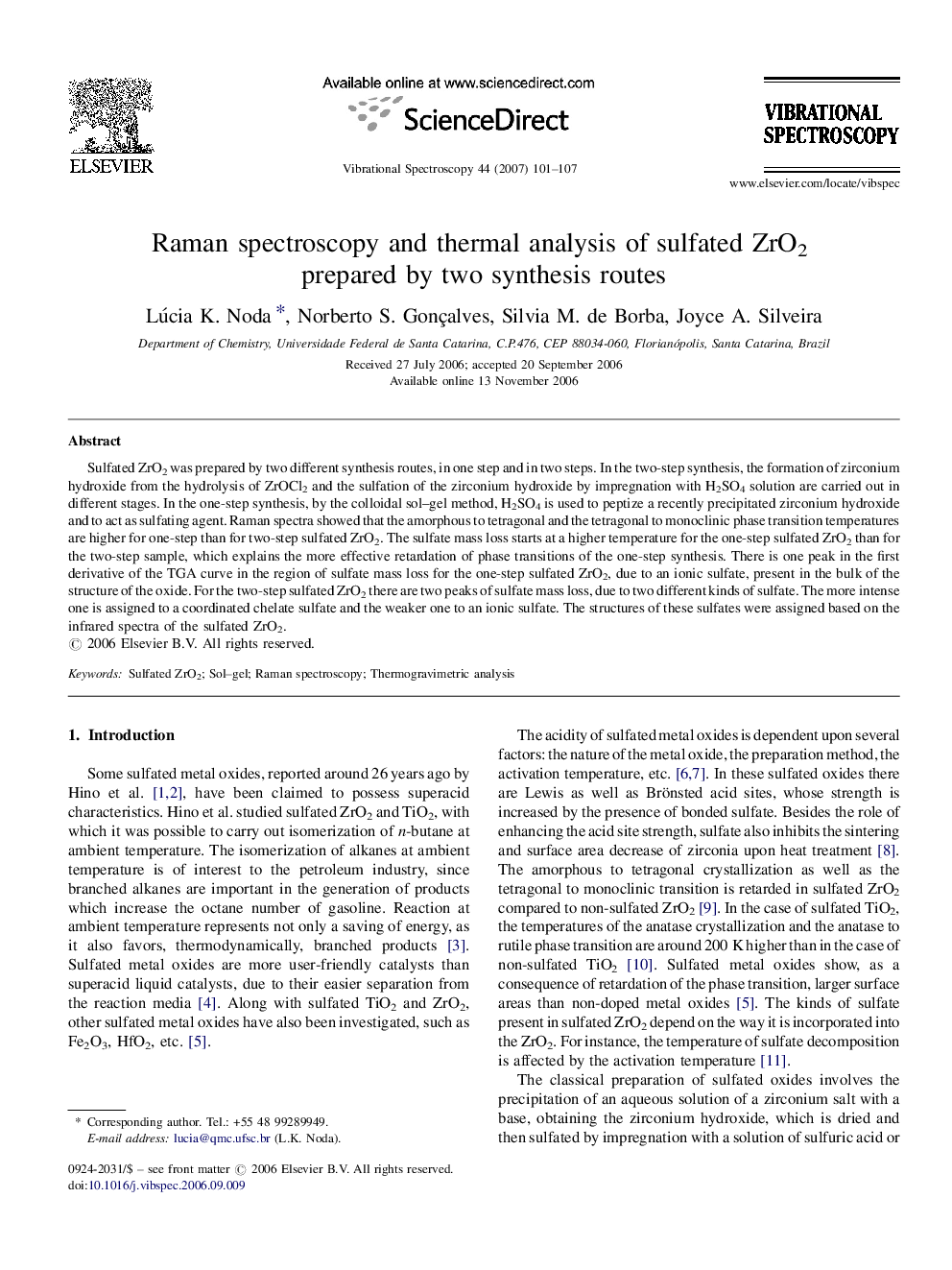| Article ID | Journal | Published Year | Pages | File Type |
|---|---|---|---|---|
| 1250987 | Vibrational Spectroscopy | 2007 | 7 Pages |
Sulfated ZrO2 was prepared by two different synthesis routes, in one step and in two steps. In the two-step synthesis, the formation of zirconium hydroxide from the hydrolysis of ZrOCl2 and the sulfation of the zirconium hydroxide by impregnation with H2SO4 solution are carried out in different stages. In the one-step synthesis, by the colloidal sol–gel method, H2SO4 is used to peptize a recently precipitated zirconium hydroxide and to act as sulfating agent. Raman spectra showed that the amorphous to tetragonal and the tetragonal to monoclinic phase transition temperatures are higher for one-step than for two-step sulfated ZrO2. The sulfate mass loss starts at a higher temperature for the one-step sulfated ZrO2 than for the two-step sample, which explains the more effective retardation of phase transitions of the one-step synthesis. There is one peak in the first derivative of the TGA curve in the region of sulfate mass loss for the one-step sulfated ZrO2, due to an ionic sulfate, present in the bulk of the structure of the oxide. For the two-step sulfated ZrO2 there are two peaks of sulfate mass loss, due to two different kinds of sulfate. The more intense one is assigned to a coordinated chelate sulfate and the weaker one to an ionic sulfate. The structures of these sulfates were assigned based on the infrared spectra of the sulfated ZrO2.
